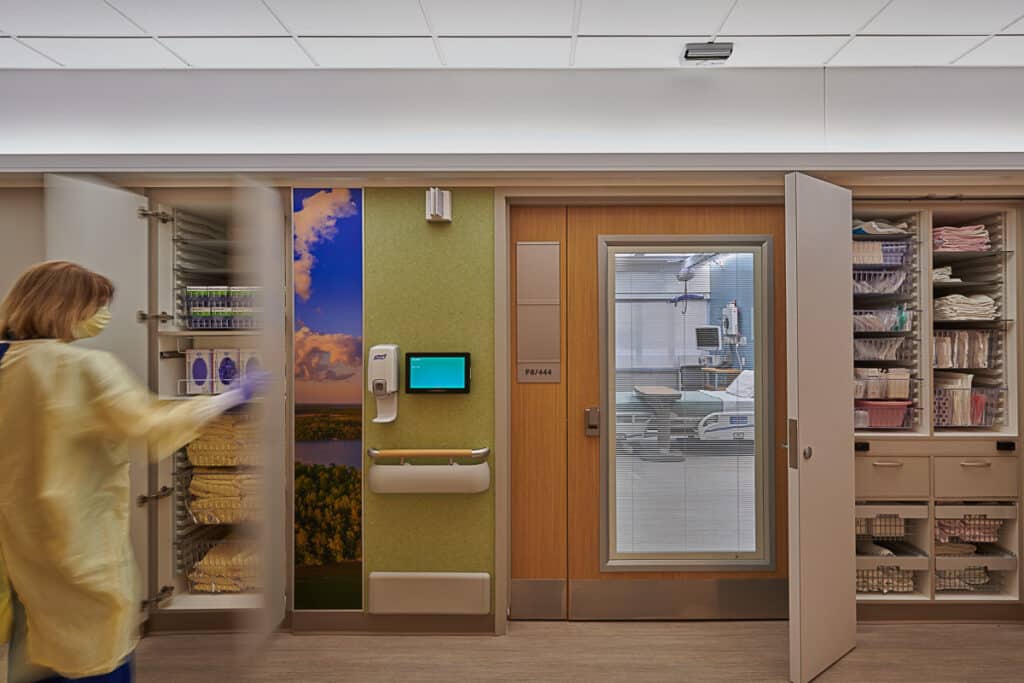5 Ways To Make Patient Rooms More Comfortable
The careful planning of a patient room starts with cleanability, and ends with exceptional patient care. Patient comfort has been proven to be directly tied with a perception of great care – even the smallest changes to a patient room can result in higher HCAHPS scores, and inevitably better patient care.
When designing patient rooms, be sure to focus on these 5 details.
1. Hygiene
Of course, this is the most important factor when designing patient rooms. A few small details on the design of a room can impact hygiene levels, especially for guests and patients. Consider keeping hand sanitizers and sinks close to the entrance of the room. This can be easily done with our retrofit solutions. Another way to increase hygiene levels is by limiting the amount of porous materials in the room in order to prevent bacteria growth. This can be done by using casework that uses materials such as 100% solid surface, glass and steel.


2. Furniture
Consider the comfortability of seating and sleeping arrangements for guests. Studies have shown that frequent visitation from guests can decrease patient anxiety, confusion, and agitation. If there are adequate seating and sleeping options in patient rooms, this can lead to happier, more relaxed patients and guests.
3. Visual Elements
Patient rooms should prioritize access to natural light through large windows. Many studies have found that natural light leads to higher vitamin D levels, better moods, and can help you sleep. Being exposed to nature can also aid in a multitude of benefits. Roger Ulrich, a visiting professor at Center for Healthcare Architecture at Chalmers University of Technology in Sweden, wrote, “Patients who could view trees through their windows had shorter postoperative hospital stays, fewer negative evaluative comments from nurses, took fewer moderate-to-strong analgesic doses, and had slightly lower scores for minor postsurgical complications.” Color can also have an effect on patients’ well-being, which is why balancing cool colors with some warmth, as well by using neutrals, beautiful beiges, warm wood tones to go along with those can give a nice sense of tranquility. Consider using warm-toned wood for casework in patient rooms.


4. Storage
Space for personal storage is a basic necessity that can ease the stress of a long hospital stay. Read our blog on Increasing Need for Bedside Storage to learn about the different types of storage to prioritize in patient rooms.
5. Functionality
A patient room should be fully functional for sanitation and safety needs, but also for patients and guests to have a comfortable place to convalesce. Plug and play casework configurations take these elements into account. Not only functional for patients’ needs, but casework with ‘leg-less’ table designs can lead to easy access to all corners of the room for more effective cleaning, keeping staff and patients happier. Having both pull-out and pass-through nurse servers in the room can also aid in a more functional room by keeping necessary supplies close by.



There can be a lot to consider when designing patient rooms. If you are looking for a team to support your specific casework needs, contact us.






